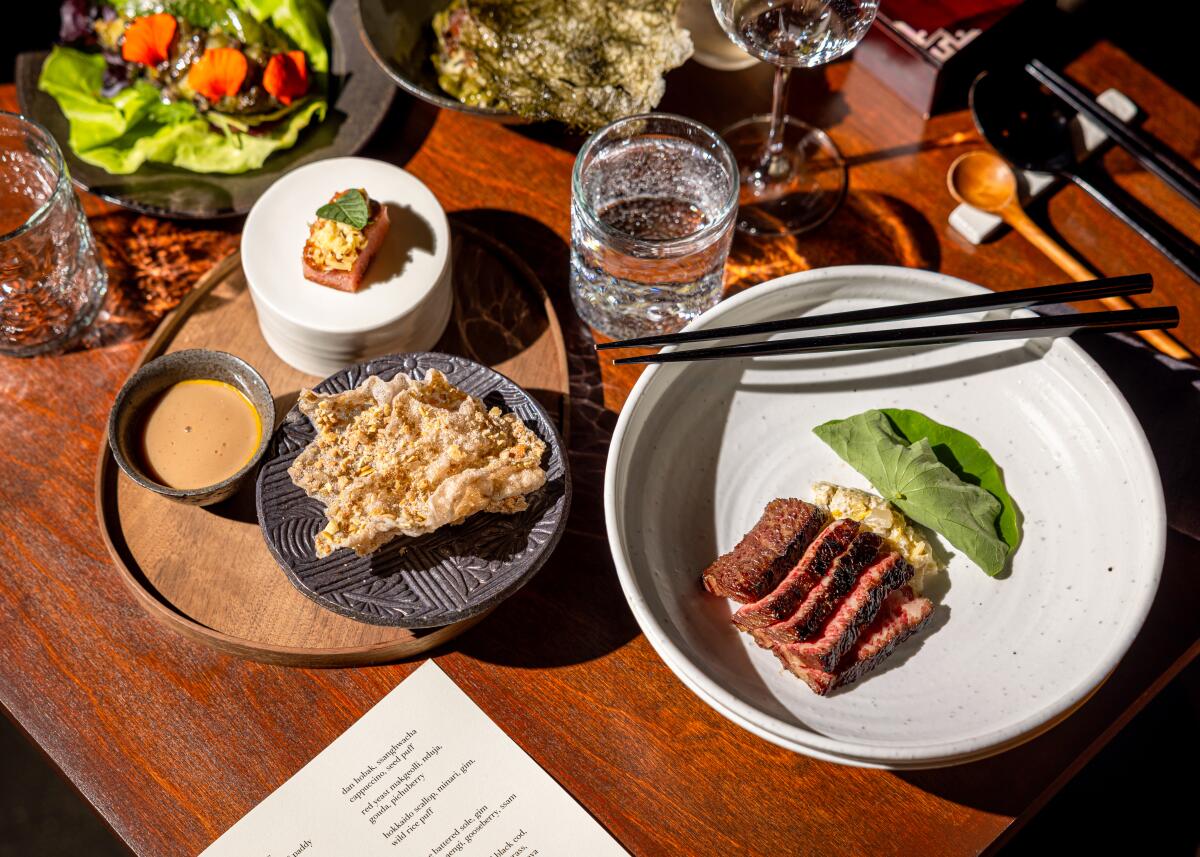
18 downtown dining destinations from the 101 Best Restaurants guide
The only accurate way to define downtown is by acknowledging its indefinableness. Below the sweeping, jagged skyline, its on-the-ground character changes district by district, year by year, contradiction by contradiction. Icons of architecture and industry abut residential high-rises, warehouses, hidden bars, parks, shopfronts with ever-changing tenants, historic theaters and, as a center of the city’s unhoused population, numerous encampments.
Downtown’s dense and disparate expressions of humanity include some of the best restaurants in Los Angeles. To know L.A., breathe in the fragrant tortillas and grilled meats at Sonoratown, seek out the smoky pad see ew in a quiet food court, fight for a reservation at Bestia or Bavel and splurge on two of the country’s best fine-dining destinations, a seven-seat ode to kaiseki and a Taiwanese-inspired tasting menu luminary, located yards apart in the same retail complex.
The Arts District can and should be considered on its own complex merits, but we group some of its culinary standouts into this guide to 18 of the area’s finest places to dine — which we’ve culled from the most recent 101 Best Restaurants in Los Angeles guide, a task into which I’ve disappeared annually for the last five years.
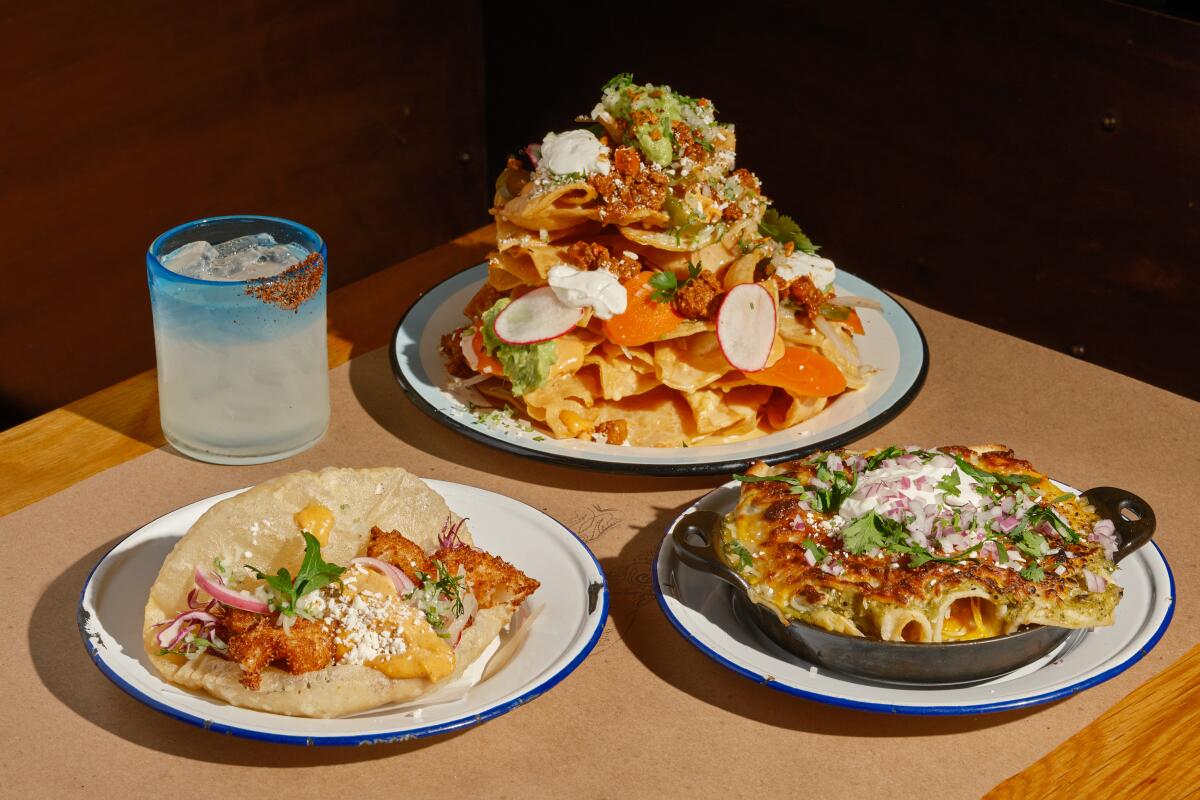
Bar Amá
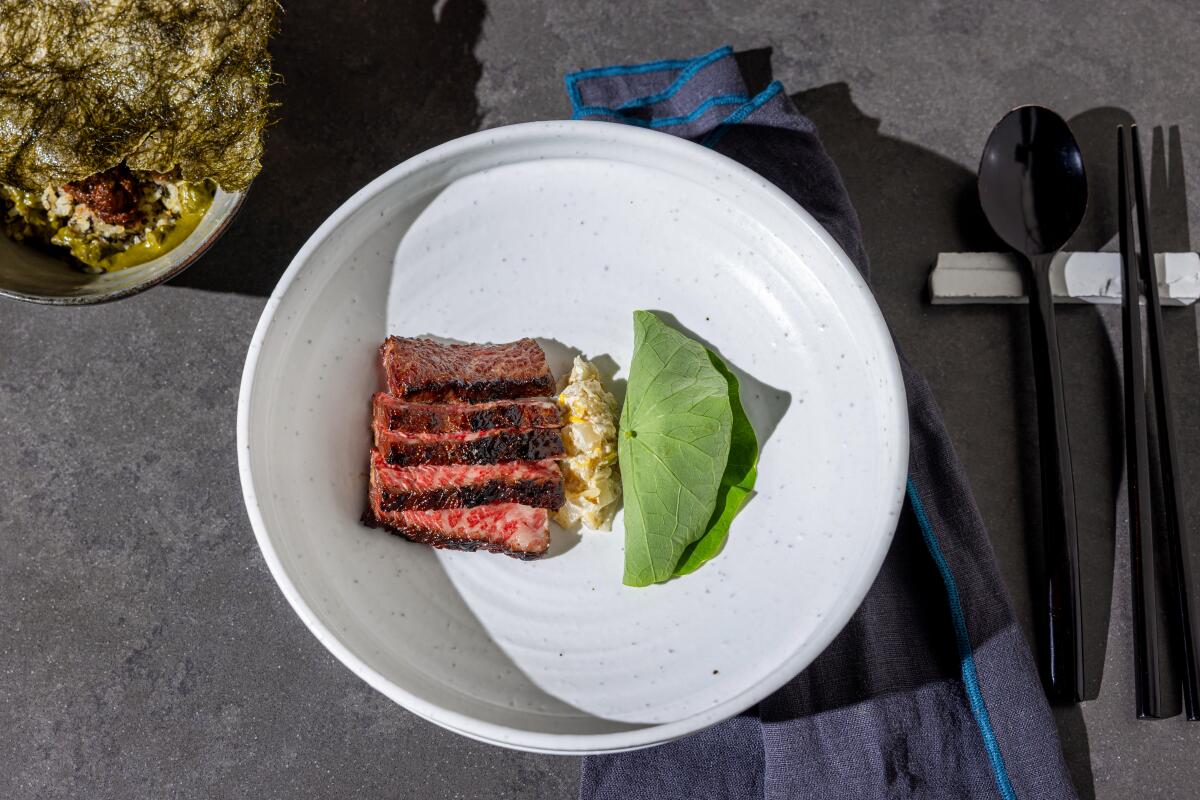
Baroo
They fulfilled their vow in late summer in the form of a sedate, industrial-modernist space in downtown’s Arts District. The new Baroo looks and feels nothing like its predecessor. Mostly that’s a gain: Park runs an engaged, genial team as general manager, and Uh’s calm demeanor and ever-straight back can be viewed through the large kitchen window. The opening menu is $110 for seven courses. To balk at a tasting-menu format is to miss out on sweet, delicate skate fried in seaweed batter and cradled in leafy greens, and slices of charred pork-collar meat fanned over a sauce that riffs on kimchi jjigae … and other dishes, honed but still flaunting a hint of wildness, that trumpet the return of an exceptional culinary mind.
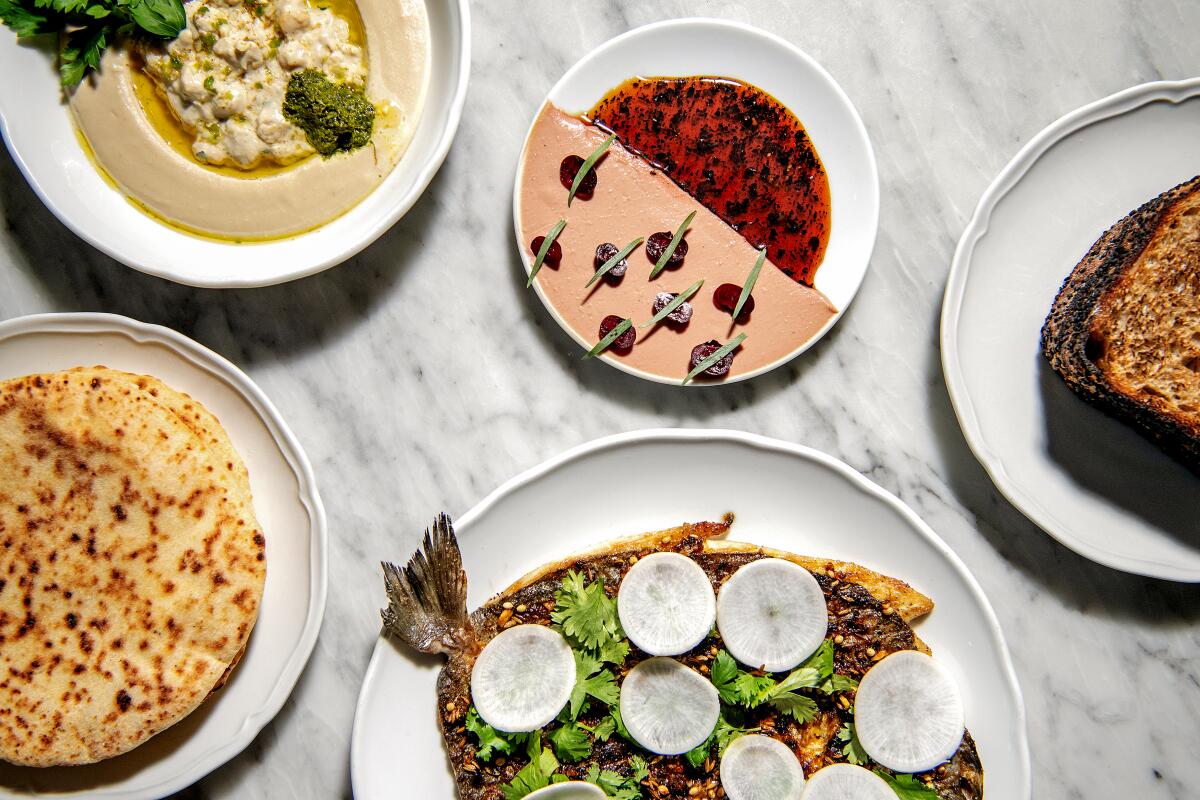
Bavel
At the table, it means the weightless hummus swirled into a moat filled with duck ’nduja is as wonderful as ever, as are the hulking lamb neck shawarma over laffa and Gergis’ leaf-shaped strawberry pastry balanced with tart sumac and sweet cheese. Anchoring ingredients — market vegetables, grilled prawns, lamb chops both charred and blushing — are canvases for chile pastes, tufts of herbs and deliciously soured dairy in many forms. Some counsel: The dining room, always full, rattles from the extreme decibels. Ask in advance for a patio table for a quieter experience. If you’re into wine, sommeliers can pull you down a rabbit hole of Grecian obscurities and older vintages of all sorts they might have stashed in the back.
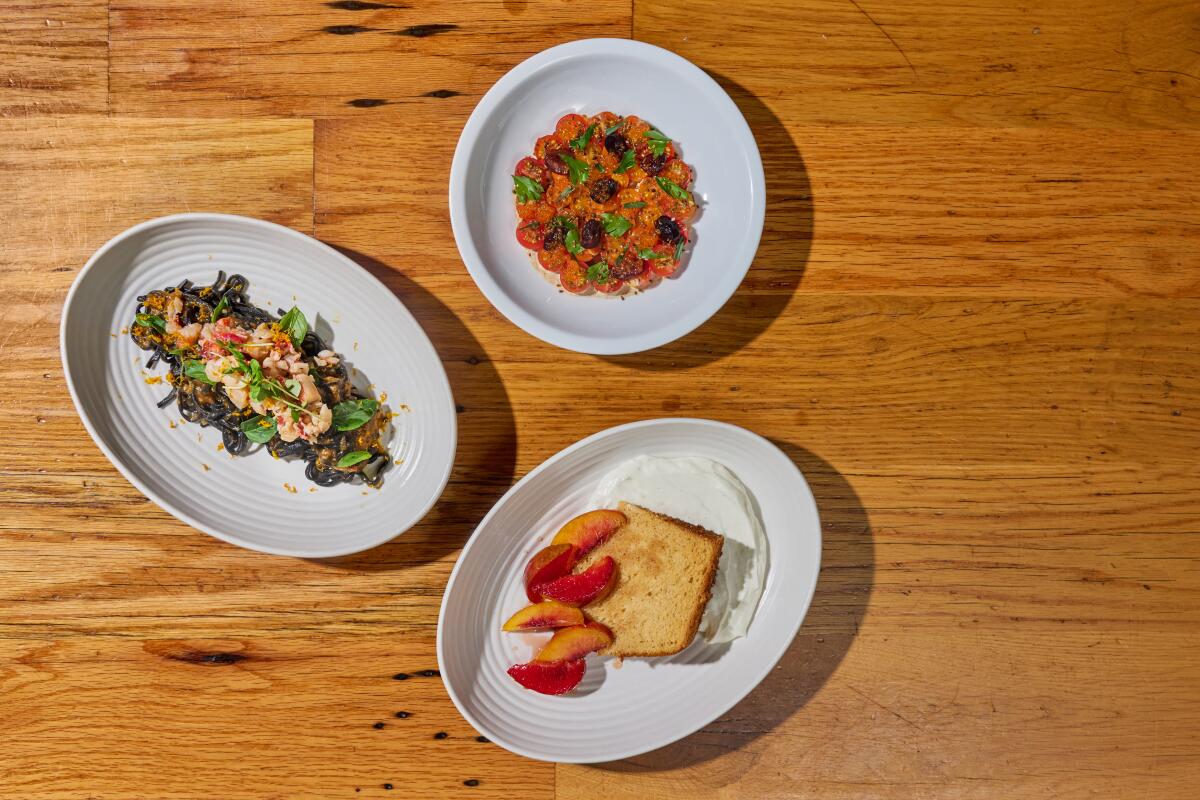
Bestia
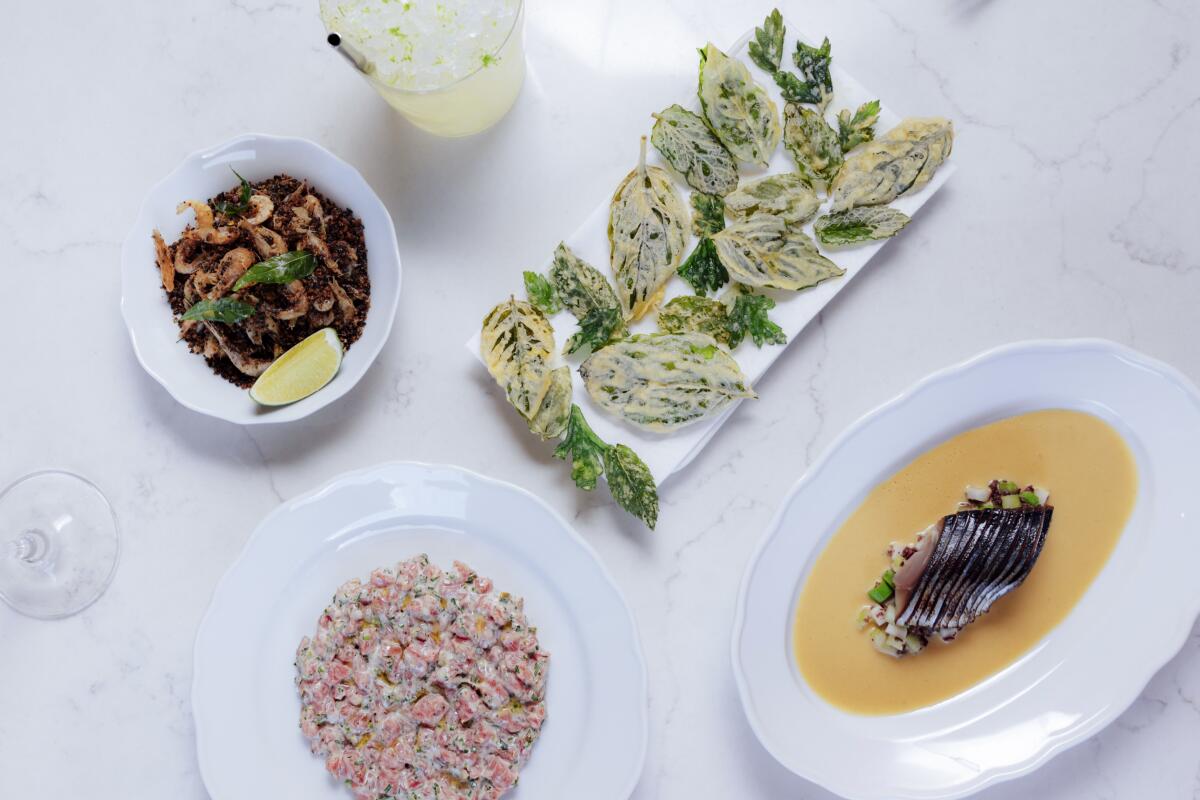
Camphor
Cocktails match the food in sophistication and complexity. Owner Cyrus Batchan spearheaded the restaurant’s collection of chartreuse — the increasingly rare (and pricey) spirit, whose recipes purportedly total more than 100 ingredients, made by Carthusian monks since the 17th century. I was amazed by the green chartreuse I tried. Its flavor had no one landing point: It rocketed from anise to summery herbs, from sweet to bitter, and back again.
Read the full review of Camphor.
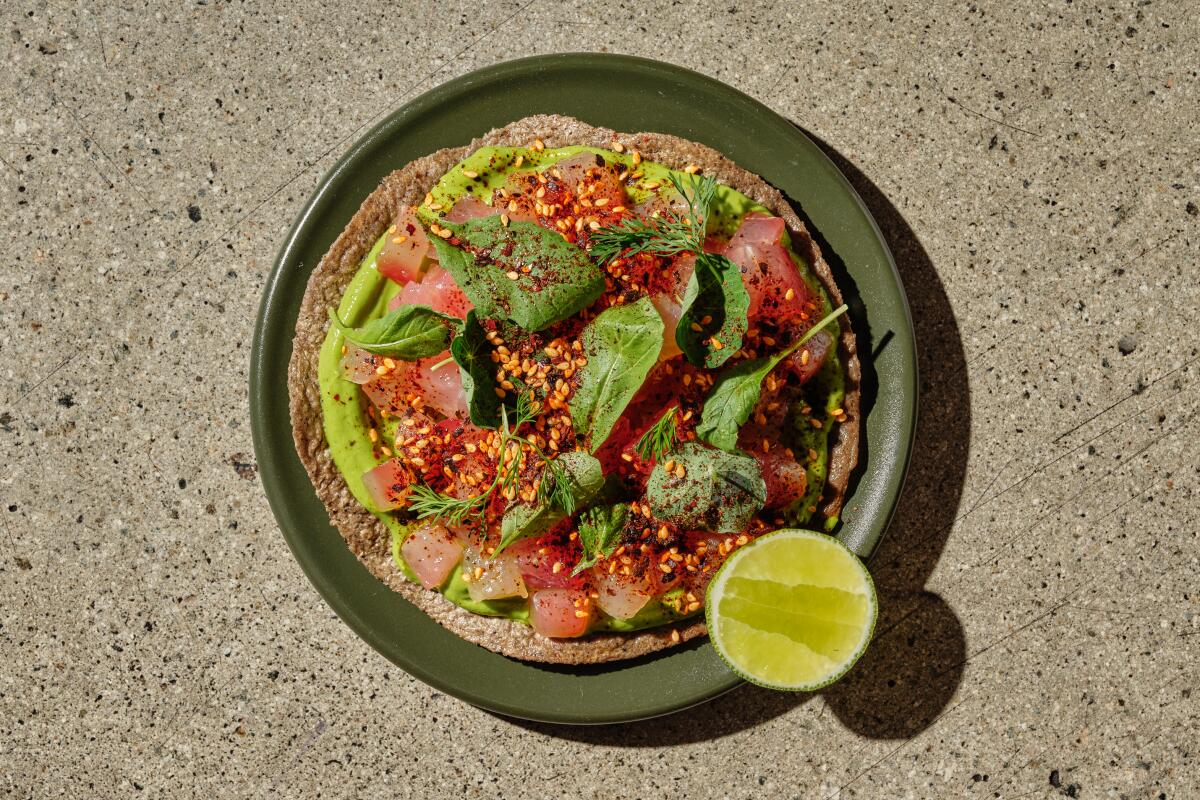
Damian
It’s important to mention Damian’s adjacent taqueria, Ditroit, hidden around back with an entrance down an alley, and the primacy of its extra-long fish flauta with a mulchy, piquant filling that evokes Baja’s smoked marlin tacos.
Read the full review of Damian.
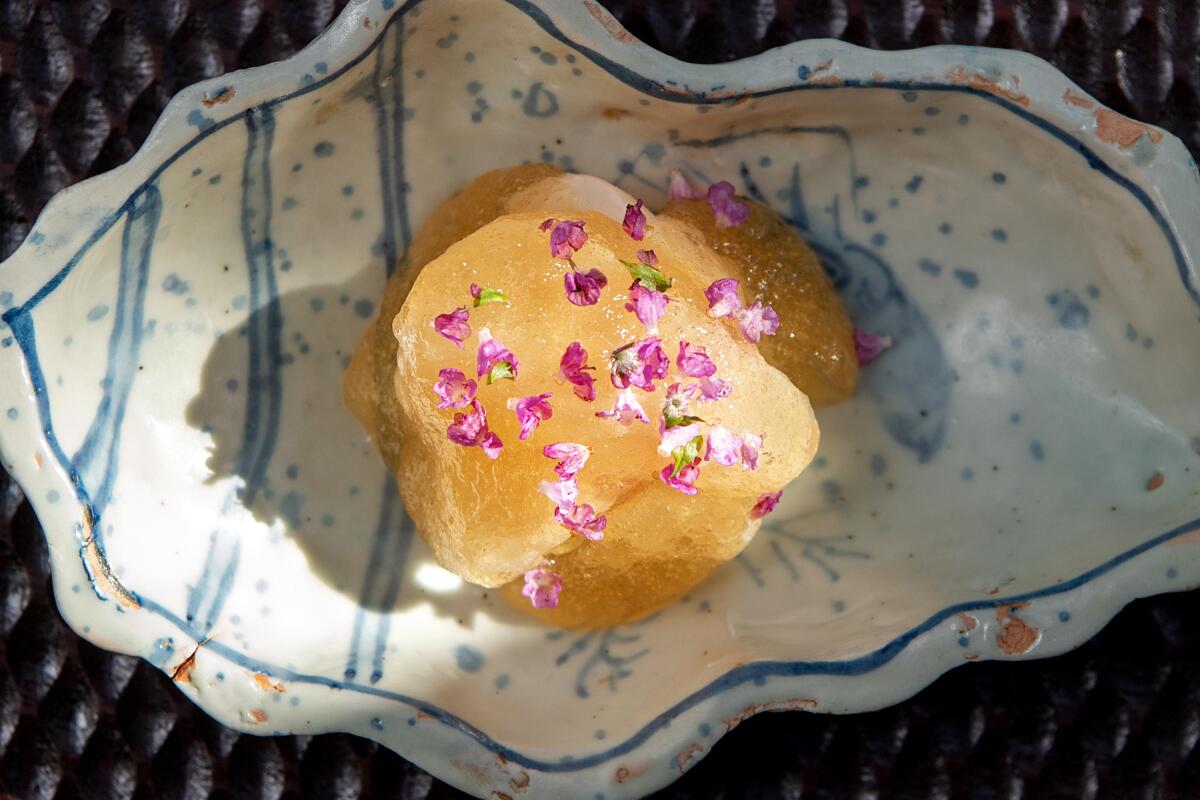
Hayato
It also takes tenacity to chase a reservation for a place that enjoys a cult-level following, costs $350 per person and serves 35 diners a week. Hayato ranked first in last year’s guide, and while I swear by its merits, I concede that scoring a seat can be a frustrating, months-long endeavor. Still. For the fruits of Go’s perfectionism — the man makes two batches of cloudless dashi per service so he can choose the better one, and always manages to find perfect strawberries or peaches or muskmelon for a rightly simple dessert — I say, even as a once-in-a-lifetime indulgence, persevere.
Read the full review of Hayato.
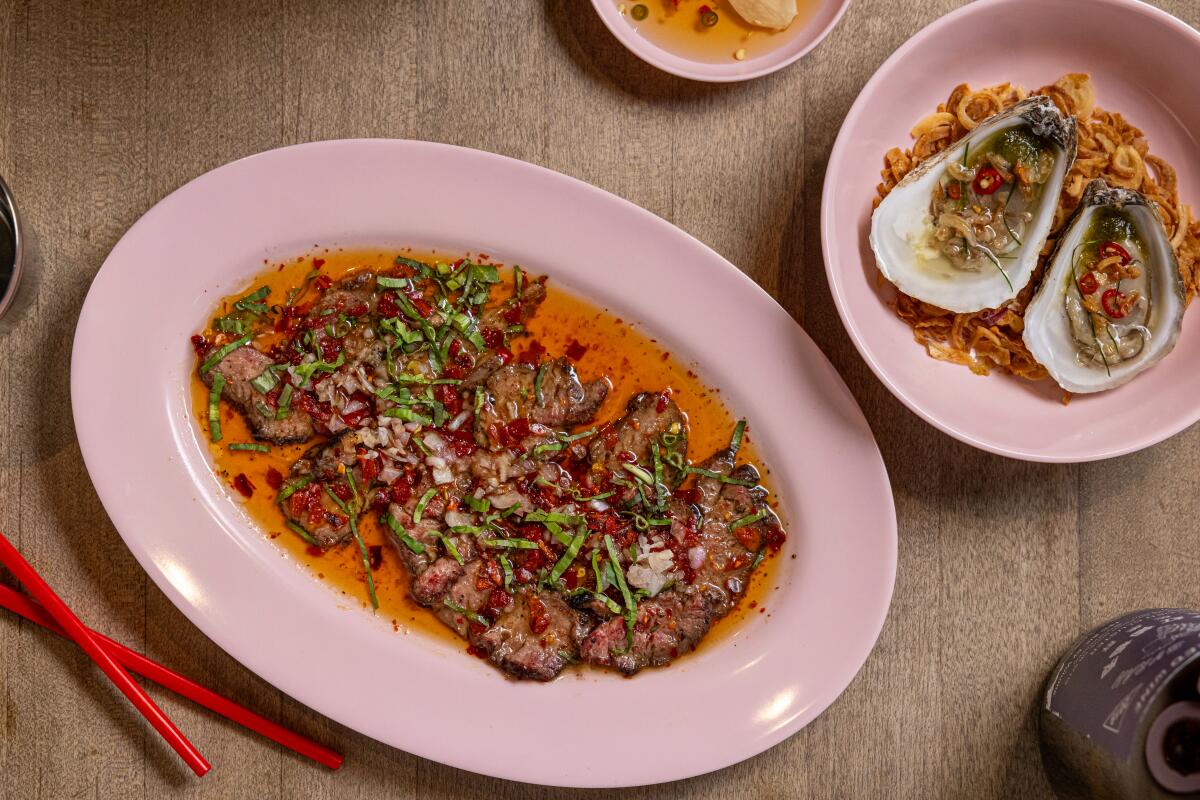
Holy Basil
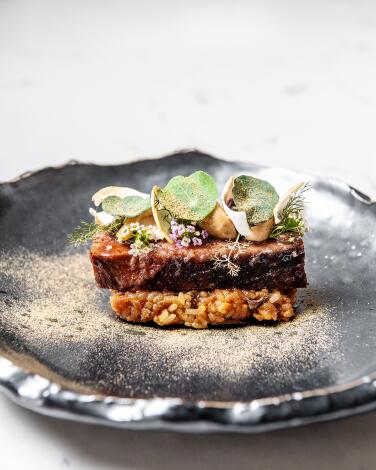
Kato
Those of us who have followed Yao’s career tend to refer to the airy, wood-and-concrete-lined space in Row DTLA as Kato 2.0, since the restaurant began as a bootstrap operation in a West L.A. strip mall in 2016. It’s been nearly two years since the move, an upgrade of outsize proportions, and every ambition that first landed Kato at the top of the 101 Best Restaurants list in 2019 has been more fully realized in spades. Yao’s longtime business partner, Nikki Reginaldo, leads a staff of servers with serious demeanors; she brings levity with wit and boss R&B playlists. Ryan Bailey came aboard in the new location as the third leader and the beverage guy. Between his 70-something-page wine list, including the city’s most trailblazing nonalcoholic drink program, and bar director Austin Hennelly’s alchemical, easy-sipping cocktails, I sometimes wish I could come solely to imbibe. But the food thrills. Look for the most unassuming presence by the stoves, and there’s Yao. His quietness hides his relentless creativity. He’s swapping out luxe Hokkaido scallops in plum reduction one week for lobster over buttery shrimp toast the next, using Sichuan pepper as brain teasers, making the rightful case for pig’s ears as delicacies, and offering a savory-sweet bao filled with salted egg yolk custard as a climax.
Dinner in the main dining room is $275 per person, with a slightly abridged $170 tasting menu of Kato classics at the bar that’s ideal for solo diners and usually includes a dish involving caviar, mussel liquor, smoked onion cream and a filling side of milk bread. It’s wonderful, but the main experience feels more refined, more driven, each time I visit. So much of our fine dining winks with signifiers of our culture — a sashimi plate here, a Mexican ingredient there — but Yao’s cuisine originates from an interior place. This is me, it says. And when we taste it, we understand: This is Los Angeles.
Read the full review of Kato 2.0.
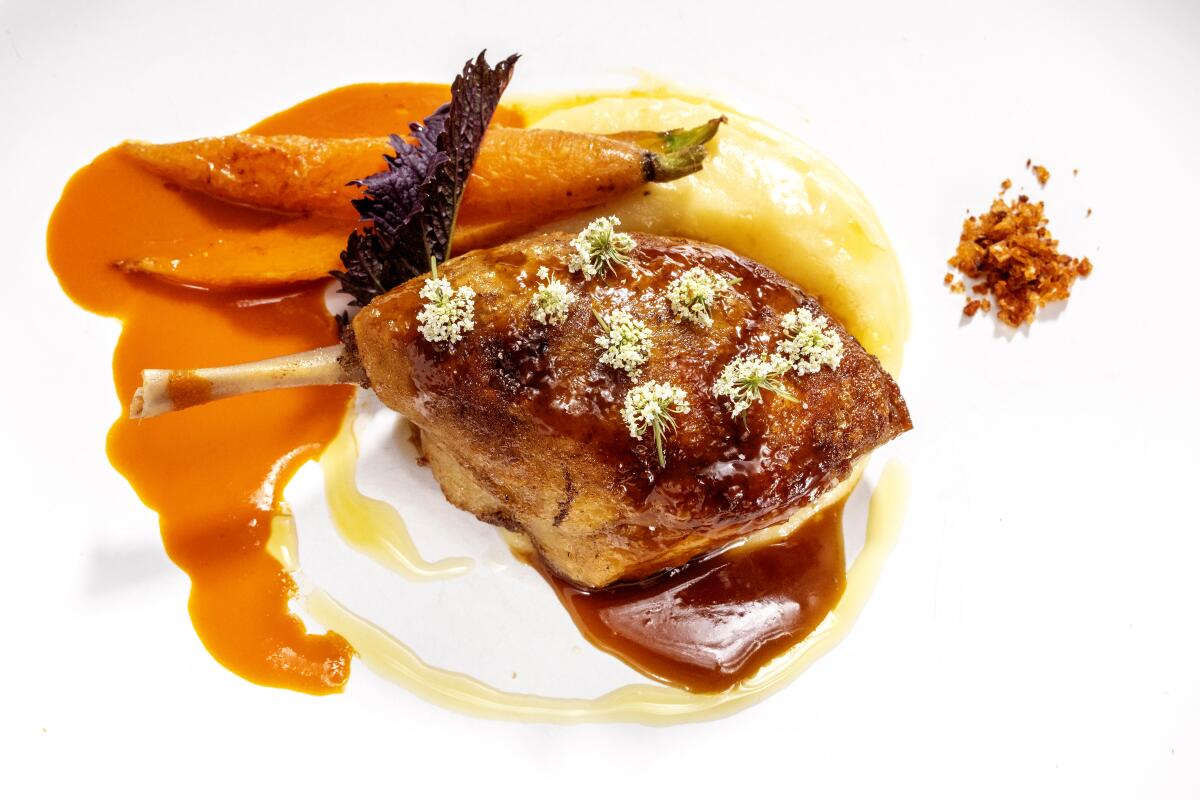
Orsa & Winston
Chawanmushi with clams, gooseberries and caviar opened an early September dinner, highlighting the seemingly improbable combinations that Centeno pulls off time and again. After an entree of sturgeon paired winningly with huckleberries, the meal finished with a just-ripe pluot battered, fried and garnished with mascarpone cream and miso caramel. It put a bow on the Japanese-Italian themes while reminding me exactly where I was in the universe. Your meal likely will have wholly different ingredients, though you’ll catch the same imaginative throughlines that have kept Centeno’s creativity engaged for the last decade. The restaurant’s staff is smaller these days, which makes the place feel both more intimate and also somehow more romantic. Count on longtime server and sommelier Romain Racary to tell witty stories about the wines he’s pouring in his satiny Parisian accent.
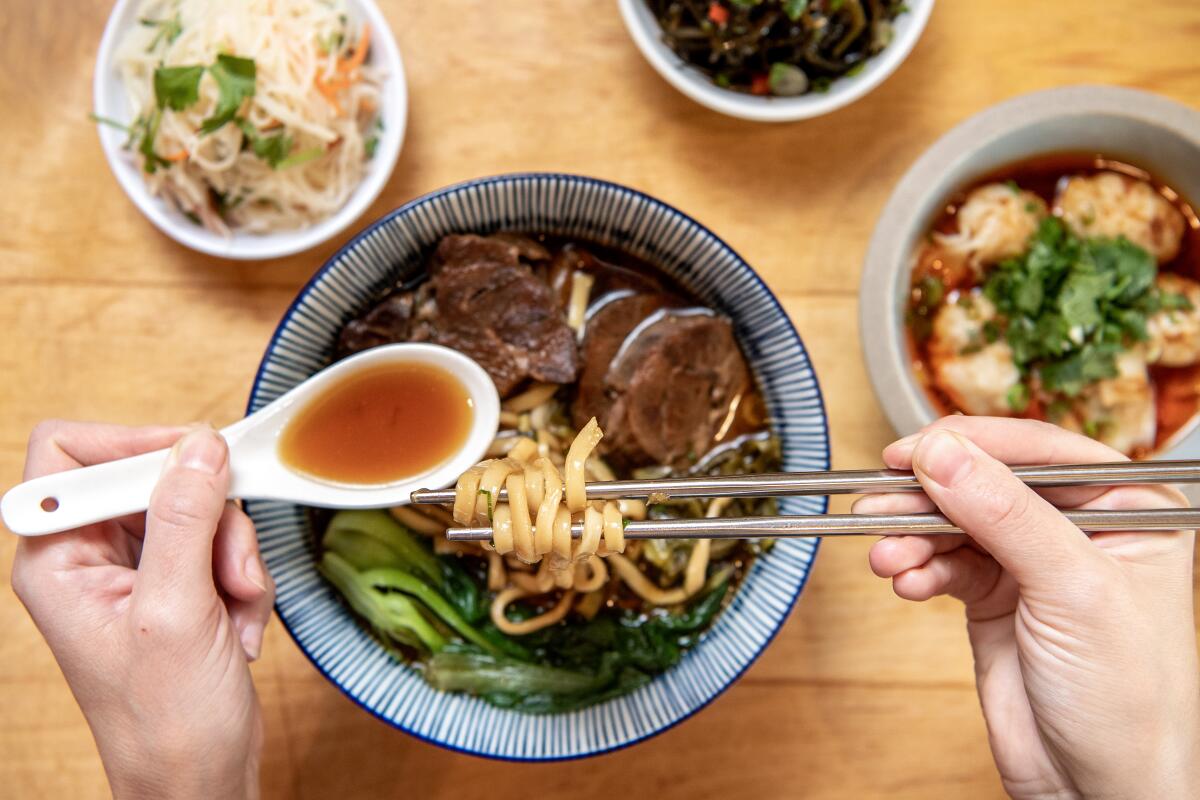
Pine & Crane
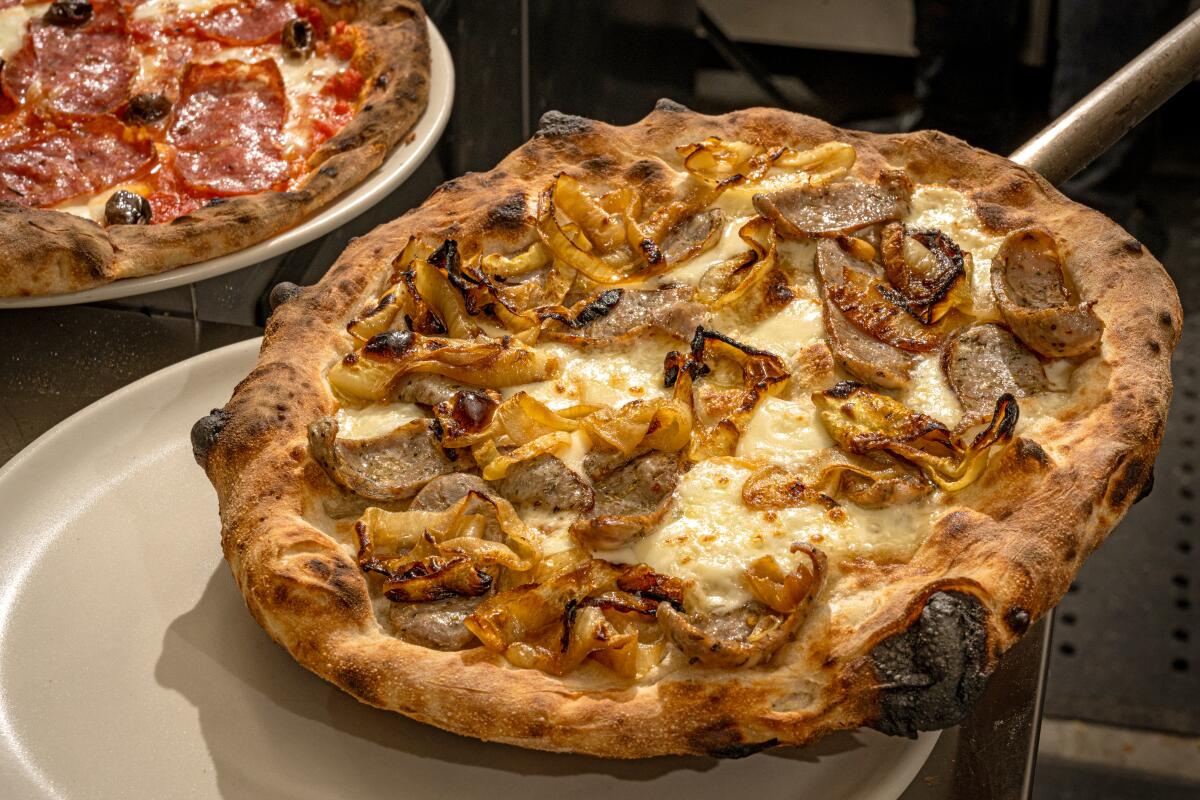
Pizzeria Bianco
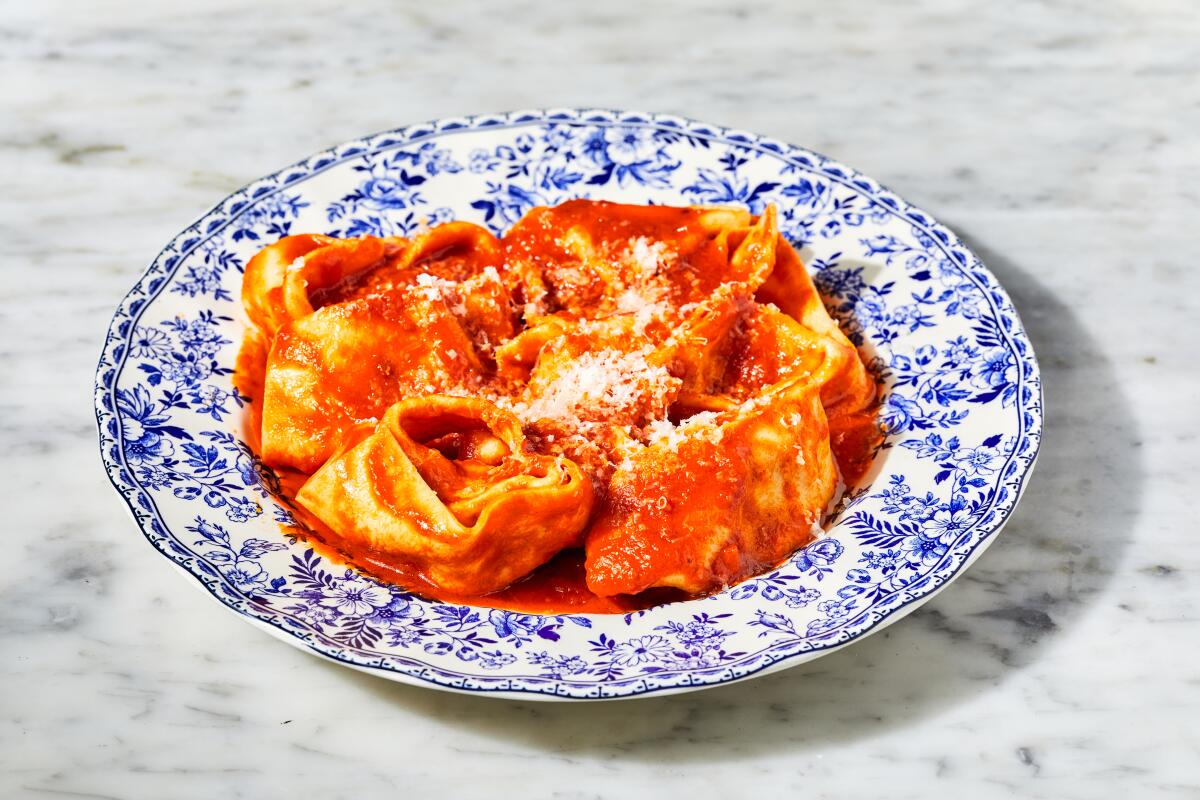
Rossoblu
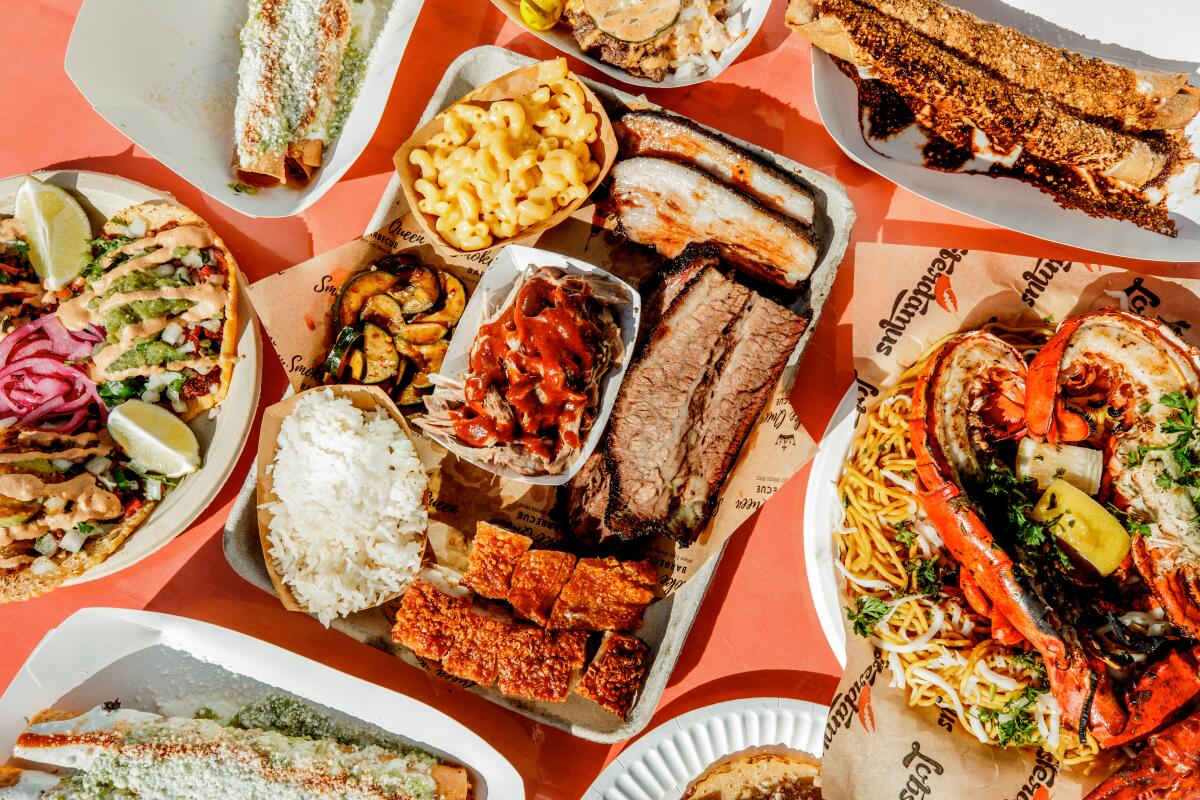
Smorgasburg L.A.
The pleasure of attending Smorgasburg in its eighth year is revisiting vendors that have gained citywide followings, while also scouting out newcomers. A recent Sunday tour included a breakfast burrito from Jonathan Perez’s Macheen, lamb barbacoa flautas from Steven Orozco Torres’ Los Dorados, and a green chorizo torta from Evil Cooks. For dessert? Velvety scoops of sour cherry and orange blossom-pistachio ice creams from Kinrose Creamery, which landed official vendor status in September.
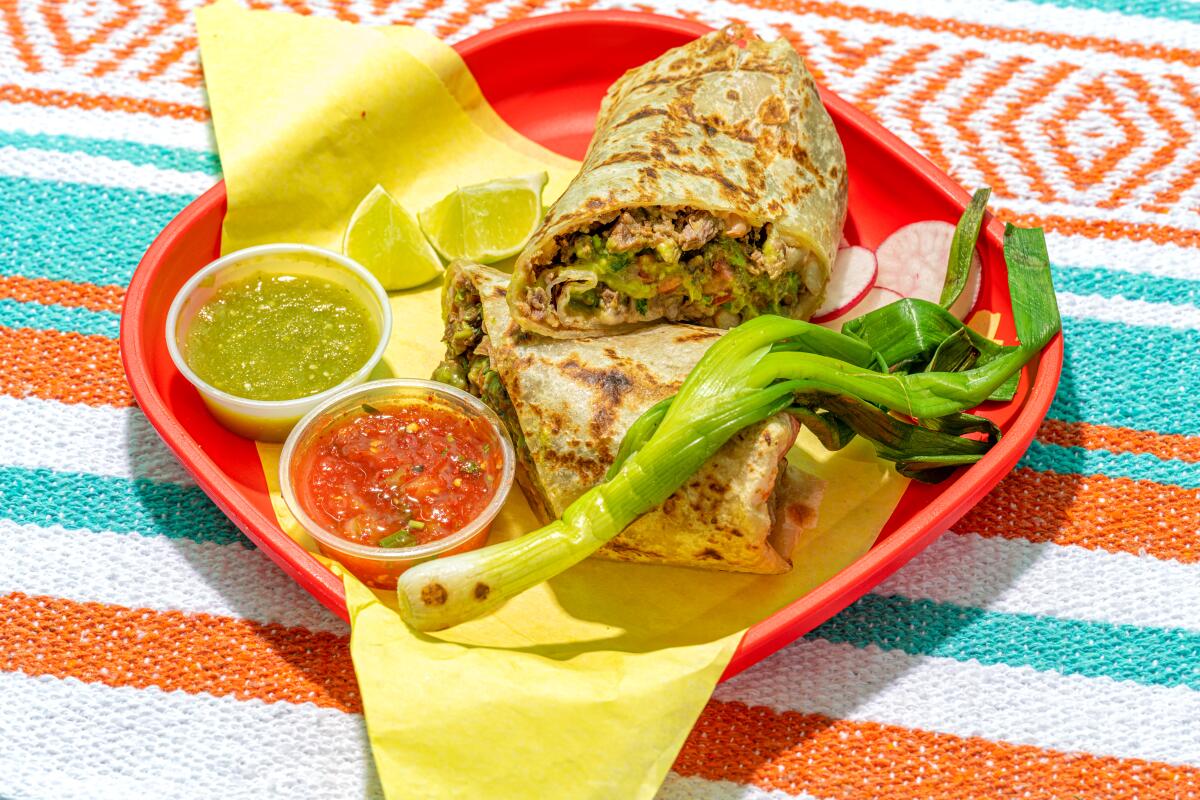
Sonoratown
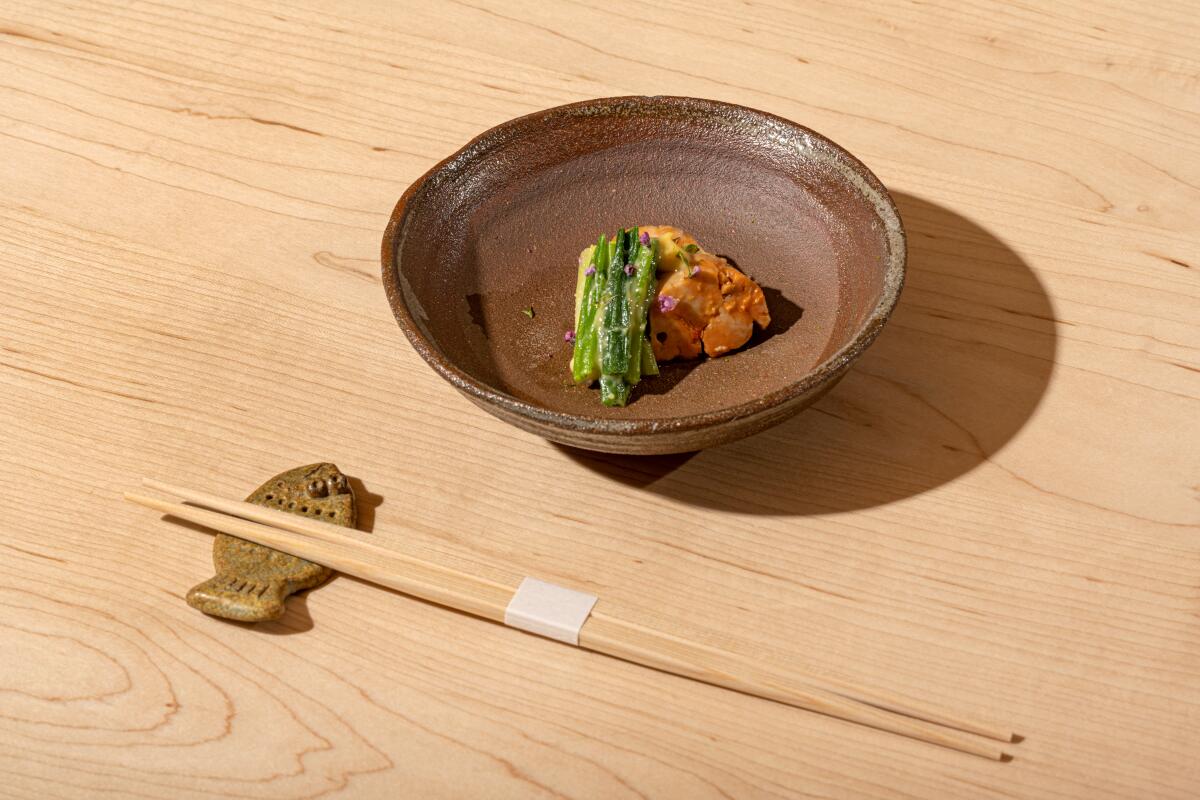
Sushi Kaneyoshi
My one note: In a time when California has better access than ever to Japanese sake, I’d love to see Inoue invest in a list that’s rangier and includes a few more interesting bottle options under $100.
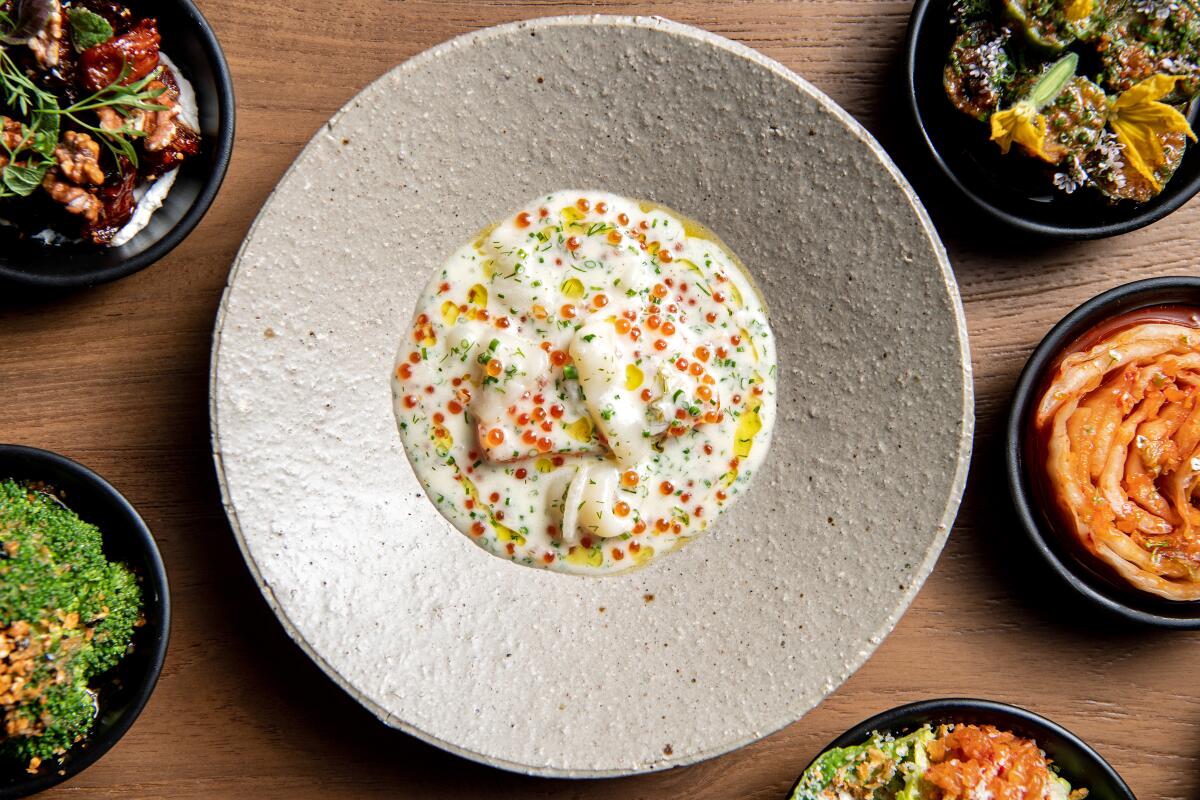
Yangban
Everything has changed. During a brief closure in August the Hongs finished making over the restaurant into a clubby room: all coal-black banquettes, rich woods and white cloth light fixtures that resemble friendly, floating ghosts. The renewed format is table service with a structured menu of appetizers, mains and desserts. Many of the Hongs’ original ideas still inform the food. Smoked trout schmear, a favorite from the opening deli case, reappears on wonderfully dense potato bread as a standout appetizer. Matzoh ball rendered to the texture of ricotta fills Korean mandu, set in an almost velvety, triple-strength chicken broth. Rounded out with pickles and black rice, the crackly-sticky chicken wings glazed with garlic and soy make for an exuberant entree, and the buffalo milk soft-serve sundae with pine nut caramel only strengthens the feeling. Now is an ideal time to become acquainted, or reacquainted, with Yangban.
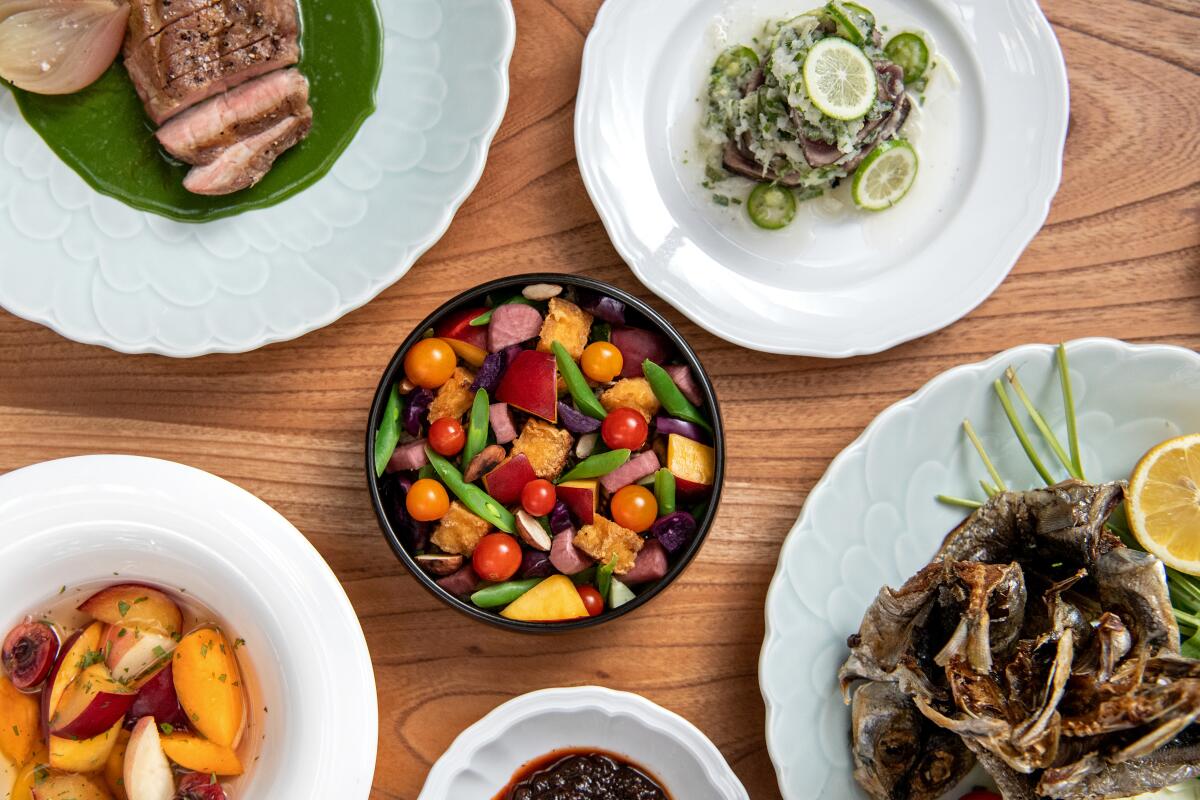
Yess Restaurant
The restaurant opened with an a la carte menu, during which time I reviewed it, and then switched to a semi-fixed dinner menu of set starters with entree choices and optional add-ons. The old format, which can still be experienced during weekend brunch, best accentuated the kitchen’s strengths. I should probably mention it has become something of a pastime to comment on the white uniforms worn by the crazy-earnest staff; they look like something out of a spa, or costumes in a restaurant-themed Wes Anderson movie, or a scene from “The Menu.” All said, this gifted team, in its otherworldly setting, has an ascendent place in L.A.’s dining landscape.
Read the full review of Yess.
Eat your way across L.A.
Get our weekly Tasting Notes newsletter for reviews, news and more.
You may occasionally receive promotional content from the Los Angeles Times.







